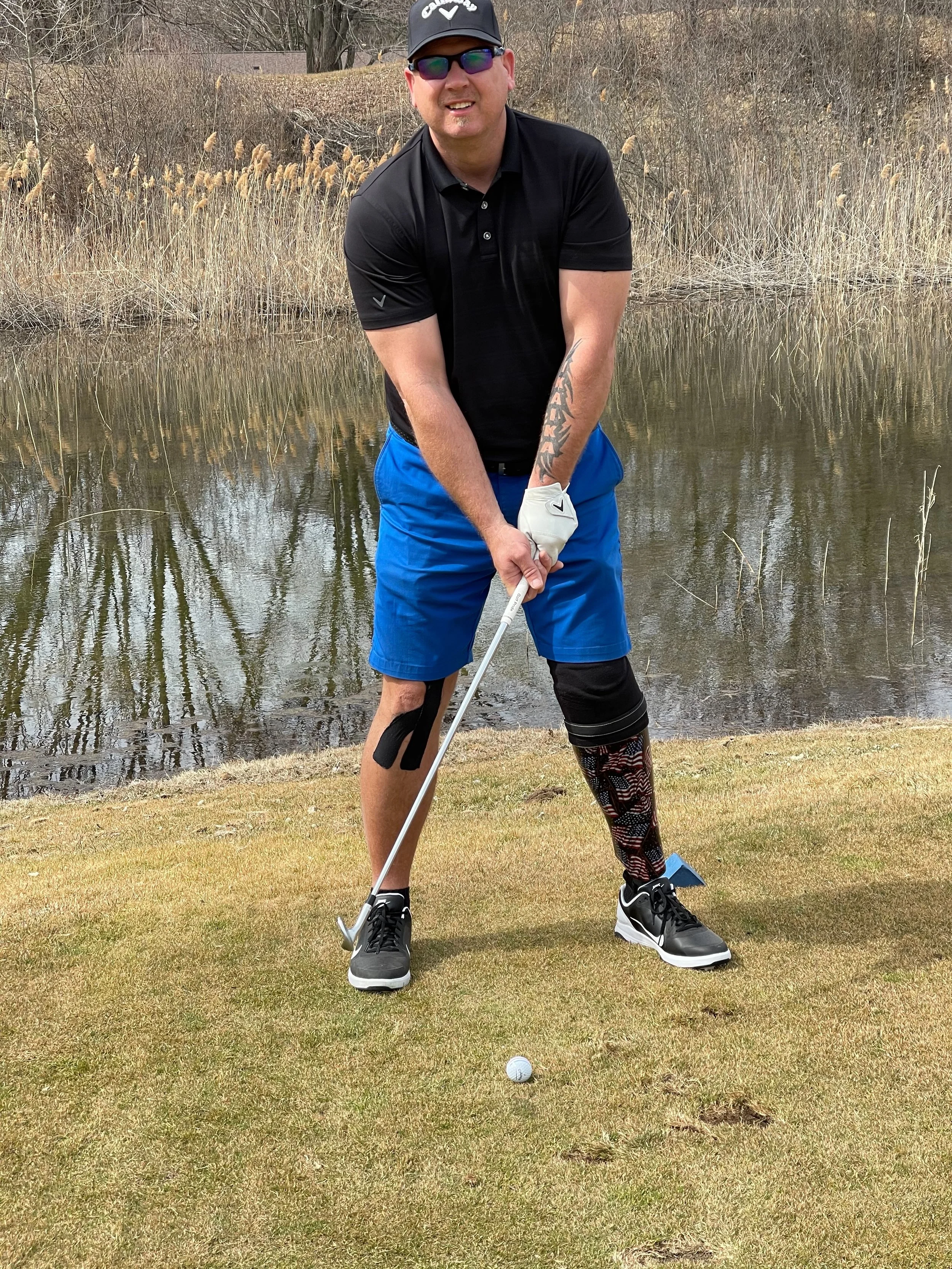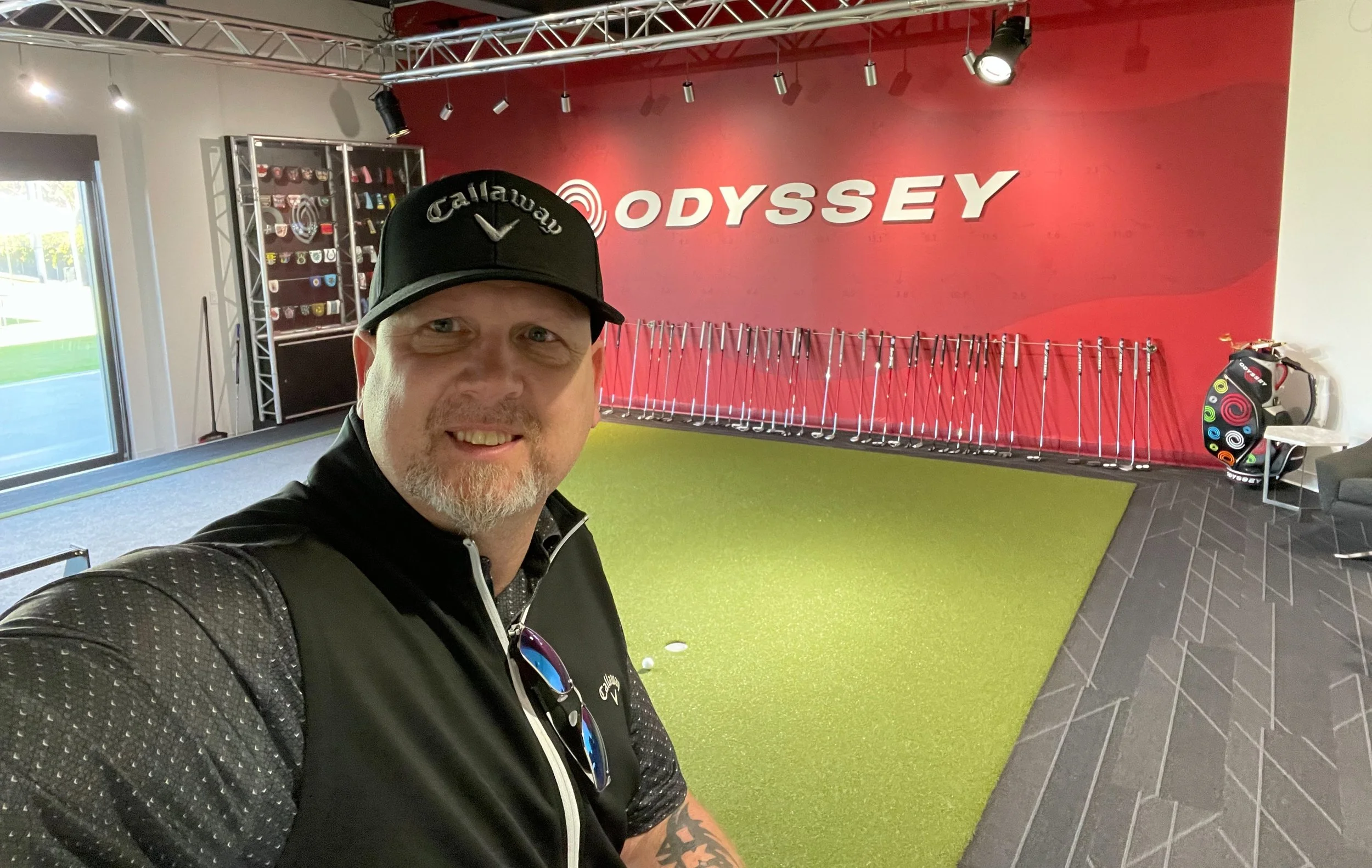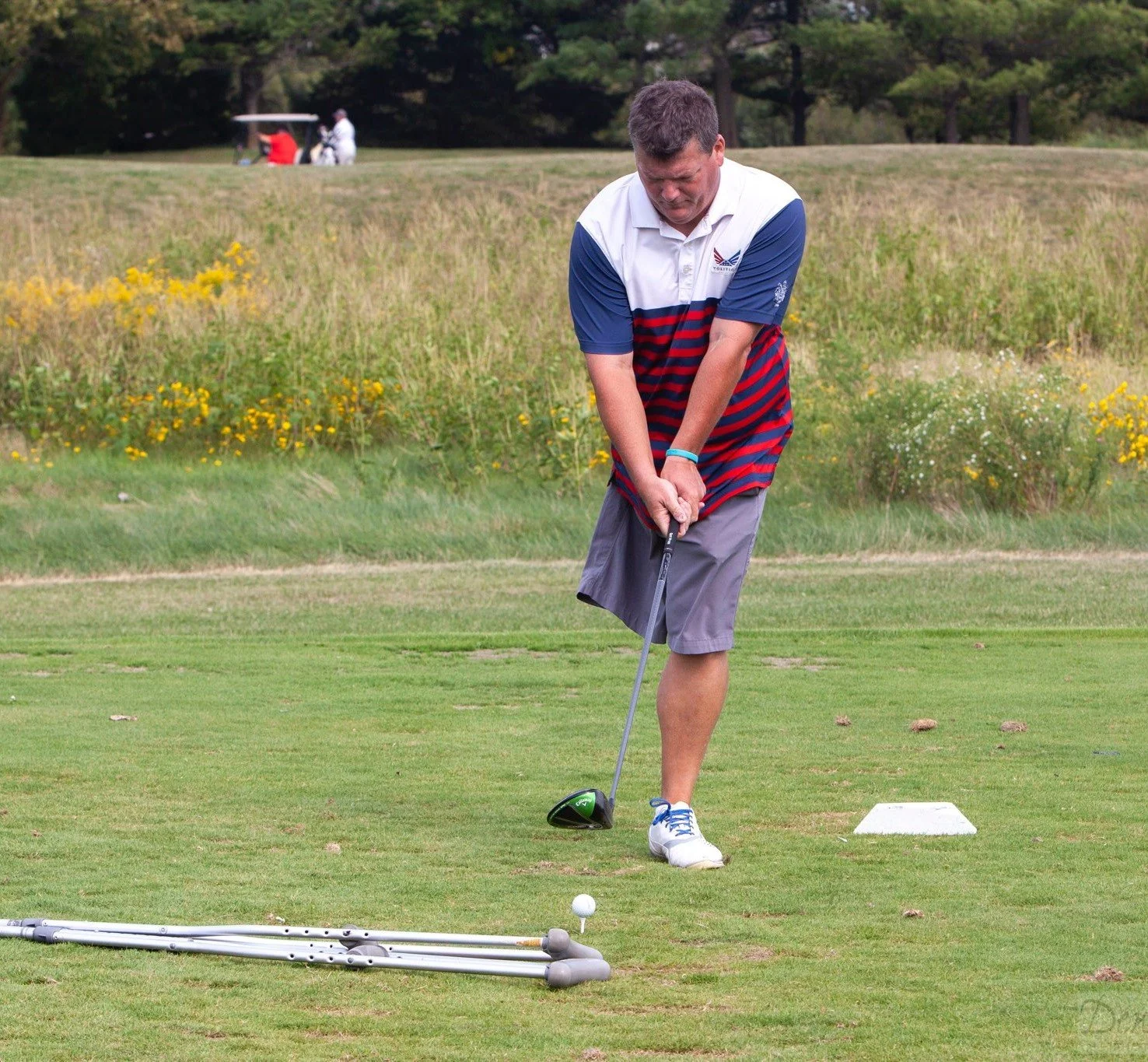Adaptive/Amputee Golfers Shine with Their Skills
By Tom Lang
Tracy Ramin should have died 24 years ago after a horrific crash on I-75 near Flint, not far from his home in Montrose.
Instead, that fateful day and his recovery since has given him the undying passion for life and zeal to help others like him improve their lives through the game of golf.
Ramin said he was hit by a fast-moving pickup truck along the freeway at age 24 that threw him over 100 feet, put him in a coma for a week, took half of his left leg and beat his body up so bad the list of injuries were so extensive, and too gruesome for some readers, to share here. Let’s just say, it completely defined the medical world’s definition of ‘trauma.’
But after getting a prosthetic left leg below the knee and enduring dozens of surgeries, he is at age 50 a leading national advocating voice, and golf teacher, for others who have mental and physical disabilities they overcome via golf.
USGA Adaptive Open at Pinehurst:
Ramin and others like him – three more from Michigan – are heading to the Home of Golf, Pinehurst, in July to play in the USGA’s first-ever Adaptive Open, along with people representing 12 countries and 29 states in a field with an age range from 15 to 80. The 15-year-old is from Hudsonville, MI, and we’ll get to her shortly.
Ramin has been in leadership roles for several years for adaptive and amputee golf organizations and his work is part of the reason the USGA has created this new tournament. Four years ago, he hosted the National Amputee and Disabled Championship at The Fortress in Frankenmuth.
That event and others like them have been around a very long time, including the Michigan Amputee Golf Association. They’ve played an annual event for decades at Pine View in Three Rivers, a free tournament for two days of golf and two meals at no cost. They raise funds to host it because most people missing body parts don’t have much money. But with the USGA now recognizing this segment it could be a game changer.
Ramin lost virtually all his muscle tissue in one shoulder, but after the accident he was in the hospital 24 days and had a make-shift prosthetic within 3 months and went to the golf course.
“The Lord sparred me, and I never knew what my mission in life was, and most people wander for years before they know,” he said. “And I didn’t know right away but for the last 15 years was trying to get golf added to the Paralympics.
“That’s’ one of the reasons we formed USAGA (United States Adaptive Golf Alliance, https://www.usaga.org/) to bring all the 40 organizations in the United States together under one roof. They serve 40,000 adaptive golfers nationwide, 26 percent of which are military Veterans.
“Even back before I got hurt, the pursuit of the next great shot is what does it. I feel if I can play in events and do well, it’s just going to create more awareness. You never know who is sitting on the couch watching and thinking to themselves they cannot do it. You may inspire someone just by walking into the room.”
Remis then told the story of inviting a friend many years ago to come out and play golf about a month before another tournament. The friend did play, then a few years later confessed that he was planning to commit suicide that day Remis called.
“It changed the course of his life, that one invitation to play.”
He’s Not the Only One:
Golf – and cancer – changed Brian Bemis’ life as a teenager.
Now at age 48 he is the Locker Room manager at Country Club of Lansing. He didn’t begin playing golf until his teenage years, after he lost his leg to a rare bone cancer at age 12.
“I fell in love with golf almost immediately,” Bemis said. “Before losing the leg I played every sport imaginable (but didn’t like golf). Then I was watching golf one day on TV and a 30 second lesson by Ken Venture was on. I grabbed my dad’s 9-iron, emptied his bag of golf balls and the rest is history.
“As crazy as this is to say, golf is like Heroin for me. I just can’t get enough of the game. I love being at a golf course. It’s just phenomenal.”
His right leg is missing all the way to the hip, leaving no attachment point for a prosthetic. He uses crutches to get around with one good leg, and uses them for putting, but drops the crutches and balances to swing the club everywhere else.
Naturally, I asked Bemis what his golf handicap is, meaning his scoring index (which is 6.4). Without skipping a beat, he replied: “Tom, I only have one leg, come on.”
We got a good laugh out of it, just like everyone else that asks him that question on a daily basis.
“I’ll be playing against a lot of friends down there (at Pinehurst), but honestly, I want to kick their butt,” Bemis said with a chuckle. “That’s how we all feel about it and it’s fun to do. And I’m just grateful that the USGA has seen something in our group, and to put on such an event, and I am just honored to be one of the 96 people to be the first doing it.
“People walk up to all the time and say that I am an inspiration,” he continued. “To me I don’t think of it that way because if you want something bad enough, I think you’ll figure out a way to do it. I guess I impress people, but to me it’s just me being me.
Kim Moore knows a lot about just being herself. (keep normal size font)
She was born without a right foot but ascended through life with amazing athletic skills using a prosthetic, to the point she played college golf (at Univ. of Indianapolis) before spending three years on the LPGA’s Futures Tour as the only golfer on Tour with a prosthetic. She never heard of events for Adaptive Golf until she finished college.
She still finds herself at college these days – as the head women’s golf coach at Western Michigan University.
“I’ve always been playing in able-body events until graduating from college in 2003,” Moore told me from her office overlooking the Western football stadium.
“It’s going to be such a cool event,’ she said about the USGA’s Adaptive Open. “I’m so excited to be a part of it. I want to do well with it being the first, inaugural USGA event. Just the notoriety that comes with that, is going to be huge for disabled golf. I really hope that they have a good media presence with this because I think a lot of people would like to see it and watch it.”
She feels that myths about adaptive golf swirl around the topics of not hitting the ball as far, and that ‘normal’ golfers will be slowed down by her presence. She regularly blows those myths sky high, and recounted an experience she had during college.
Moore went out on her own for a short practice round at the school’s home course. She caught up with and joined a 3-some of men on the second tee.
“I hit a couple shots and they were like, ‘holy cow,’” she said. “They told me a few holes later that, ‘we were kind of afraid when we saw your leg, we were thinking, ‘oh man she’ll probably slow us down.’ Then they said, ‘nope, you’re kicking our butts. We’re so glad you were able to join us.’”
Moore said if anyone watches these national events for adaptive golf, fans will see really good golf. Winners are usually under par.
Moore has adapted to every sense of her life since birth and was typically the only ‘disabled’ golfer in all her events growing up.
“So, when I go to some of these amputee events, I feel like I’m one of the most ‘normal’ people out there,” Moore said. “As a below-the-knee amputee, which in most events is a pretty good feat, but out there, that’s usually one of the most mobile players (in adaptive golf) and just seeing and watching the other players is even inspirational to me.”
Sophia Howard is one of those motivated kids who show us all that a physical challenge doesn’t mean you cannot play this wonderful game of golf – and also do it well.
The 15-year-old from Hudsonville was born without a right hand, yet she plays golf and softball competitively.
Howard just finished 9th grade at Hudsonville High School and played JV golf. Last year, Howard had a chance to play golf with the LPGA Tour’s Korda sisters, at a private event in Florida. Less than two months later, Nelly Korda won the Meijer LPGA Classic near her home, where Howard came to hang around as much as possible with her sports schedule.
When a reporter at the tournament mentioned that she is the inspiration to many others, Howard responded:
“I think my physical challenge doesn't have anything to do with it. I may look different, but I think I'm just another average person. I go out and do the game of golf how everybody else does and I don't let that stop me. Just go out and kill it.”





